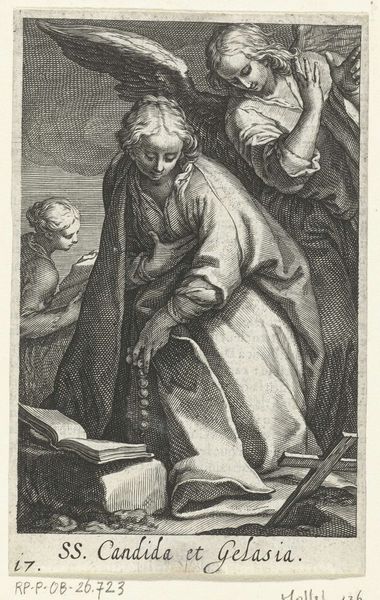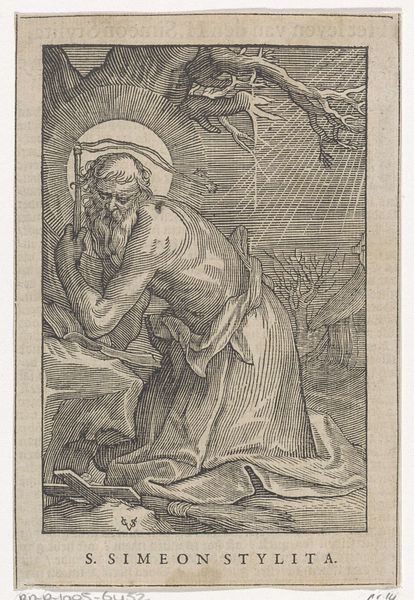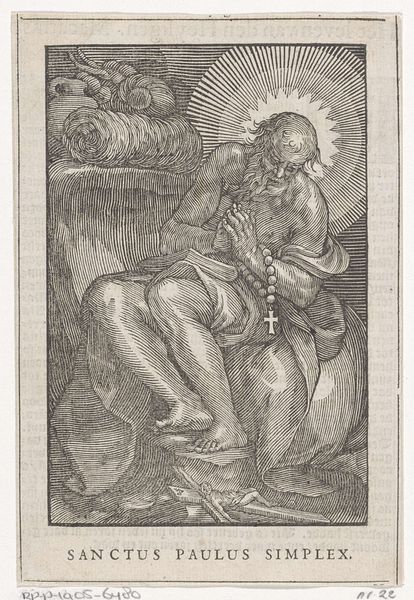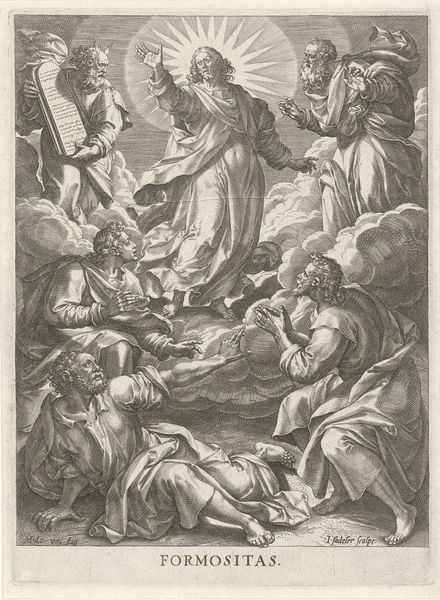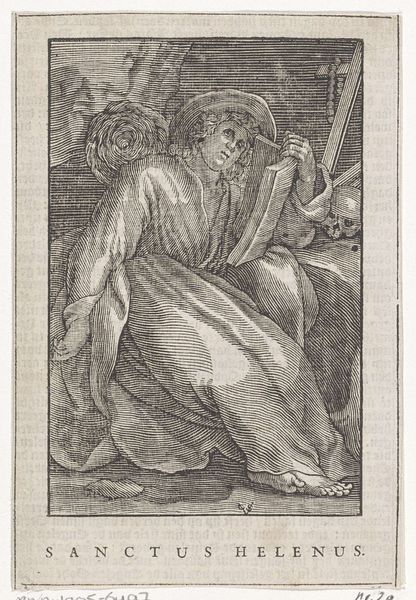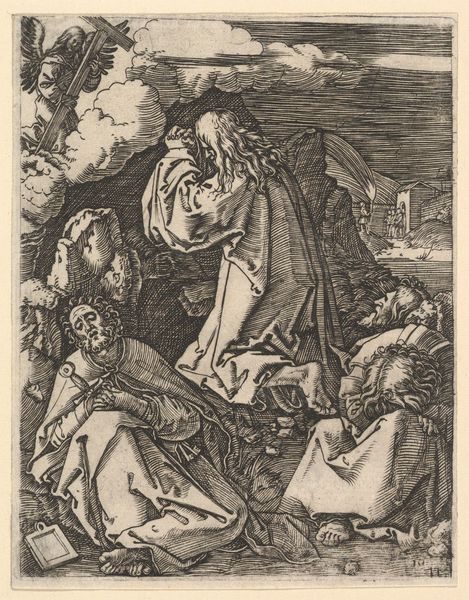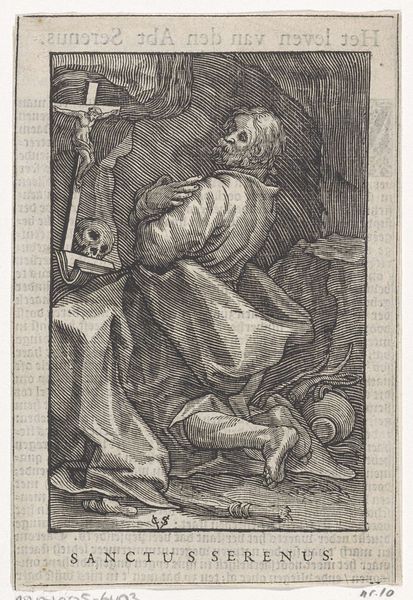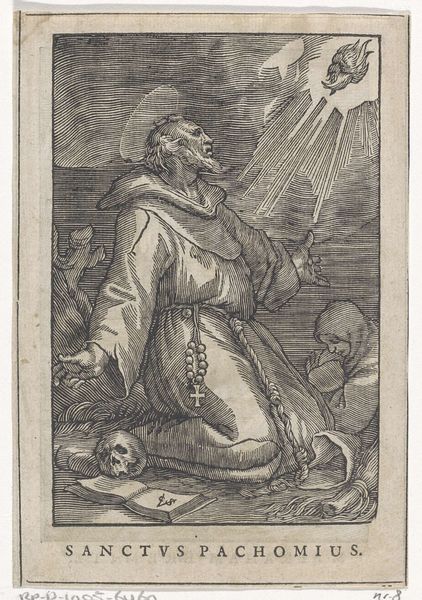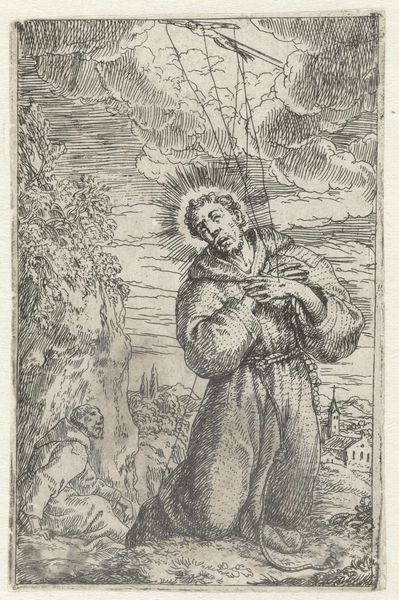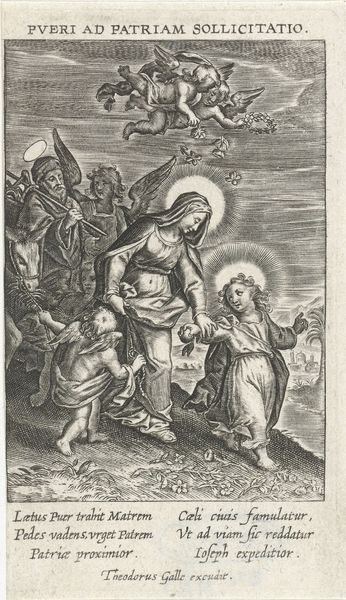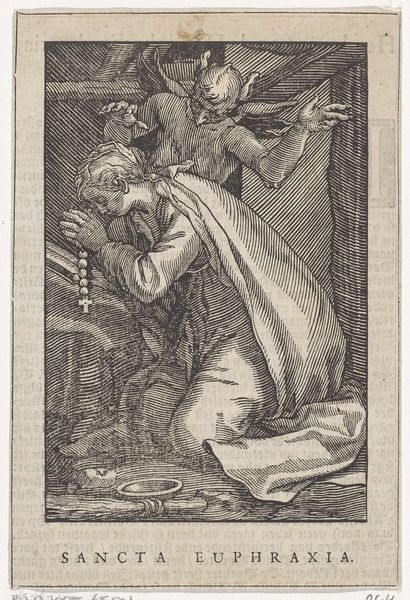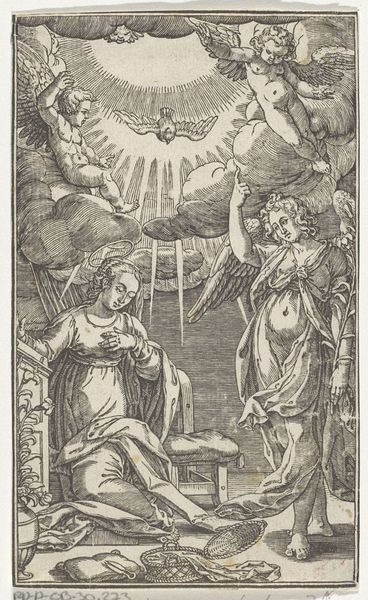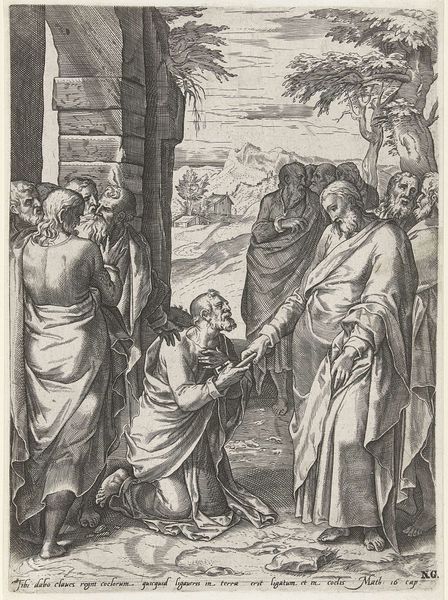
Heilige Candida en heilige Gelasia als kluizenaressen met engel 1644
0:00
0:00
christoffelvaniisichem
Rijksmuseum
print, engraving
#
baroque
# print
#
old engraving style
#
figuration
#
history-painting
#
engraving
Dimensions: height 153 mm, width 104 mm
Copyright: Rijks Museum: Open Domain
Curator: Here we have Christoffel van Sichem II's 1644 engraving, "Saints Candida and Gelasia as Hermits with Angel," currently held at the Rijksmuseum. It immediately strikes me as a study in contrasts, rendered through precise line work. Editor: Indeed. The somber, almost oppressive, tone speaks to a life of devout isolation. What can you tell us about Candida and Gelasia and their place in the patriarchal structures of their time? Curator: Well, legend portrays them as sisters who rejected societal expectations and dedicated their lives to God as hermits. This act in itself was a form of resistance, a claiming of autonomy within a deeply religious context. The angel here acts almost as a patriarchal presence—yet a welcoming and supporting one, rather than the more standard prohibitive presence. Editor: Yes, look how the engraver has meticulously crafted the angel's wings. Their overlapping textures add depth. What’s the dynamic at play through form between the holy sisters and their divine visitor? Curator: The way the figures are positioned—Gelasia appears to be documenting something while Candida bows to the angel and the holy script in front of her. I am keen on the power relations inherent in this representation of religious devotion. We might consider if the portrayal of piety is inherently submissive or a means for asserting independence within accepted religious practices of that period. Editor: I appreciate your viewpoint. To me, though, it’s more a symbolic orchestration. Note the book—an emblem of wisdom—positioned almost centrally. The engraving shows not only texture through these varying parallel lines but captures light with almost photorealistic detail considering the materials and context of the time. Curator: Perhaps van Sichem wanted to show a version of holy power through intellectualism, a version for all genders as knowledge has long been used as leverage to gain social access. Editor: Regardless of intention, the artistry is striking. It's compelling how, through seemingly simple lines, so much depth and meaning are conveyed. Curator: Absolutely. Engaging with art, such as this, encourages us to reflect critically on how women were both represented and empowered within religious frameworks. Editor: And that the interplay of light, shadow, and form remains, regardless of history, deeply resonant.
Comments
No comments
Be the first to comment and join the conversation on the ultimate creative platform.
